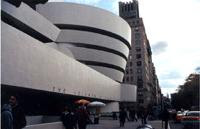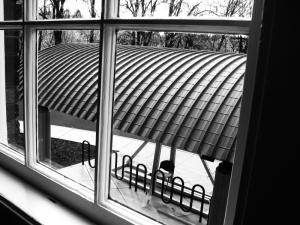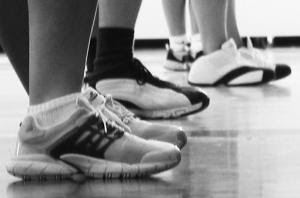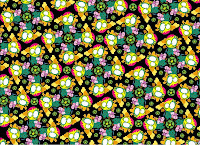Guggenheim Museum Frank Loyd Wright was a master of line and pattern in the buildings he designed. One of the most famous is the Solomon Guggenheim Museum in New York City.

For this assignment, you will capture 15 images that explore line, texture, and pattern in the world around you.
Line

In this photograph the window frame literally frames the image of the patterns on the roof. Using one object to frame another is a great way to add depth to your photos. Experiment with a frame that adds contrast in terms of light or texture when compared with your subject.

This photograph used the macro function of the camera to capture the texture of an everyday object, tire tread. The image was enhanced with more contrast and the sharpen filter. You'll find lots of examples of lines, patterns and texture on cars. The macro setting on your camera will let you focus on objects only inches away.
Implied Lines
This photograph uses objects in a line. You'll have to scout around for these images but keep your photographic mind's eye open and you'll find them!

Texture
In these images from Mark Moody's website, we see the macro used on the crab's eyes. There is contrast in color as well. Notice how the angle of the shot creates an impression of size. This photo would not have the same impact if it didn't use hard lighting.


Pattern
 A Pattern is a repeated decorative design or a sequence of images or shapes regularly found in objects or on surfaces.
A Pattern is a repeated decorative design or a sequence of images or shapes regularly found in objects or on surfaces.Assignment:
You will photograph a total of 15 photos:
* 5 of these photos must demonstrate Line
* 5 of these photos must demonstrate Texture
* 5 of these photos must demonstrate Pattern
Eye Candy! - You're looking for images that will catch your eye. You'll find examples of lines, patterns and texture in everyday places. Try and fill up the entire frame of your photograph with those lines, textures, or patterns. Use them to create strong images with a lot of contrast!
You'll upload each photo independently onto Canvas. Again, no need to name these photos when uploading to Canvas. Your photos will be identified by the student who uploads them (you).
This assignment is due for you on by the end of class on Wednesday, May 6th.

